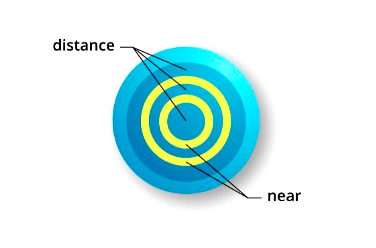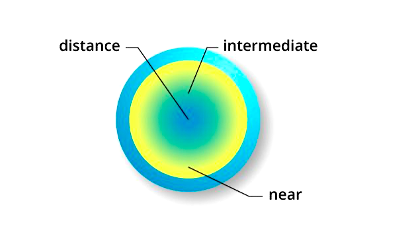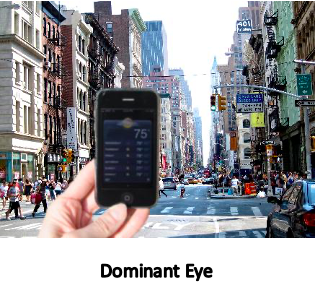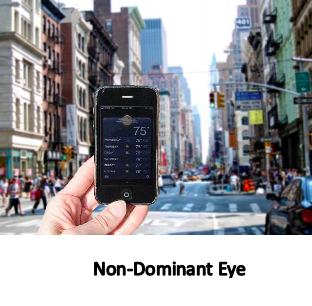Products
Contact Lens for Presbyopia
Have you noticed that you need to hold your phone or reading material a bit farther than before to see clearly?

Now, you need to bring a pair of readers with you no matter where you go, or you would not be able to see what are in the ingredient list imprinted on the canned food! That is actually a sign of presbyopia a.k.a. age-related long-sightedness. Can presbyopia be cured? Just as we are not able to reverse aging, it is not possible to cure presbyopia at the moment. However, for you who are not used to wearing glasses or if you have an active lifestyle, we have solution for you – multifocal contact lenses!
Multifocal contact lenses are contact lenses with multiple prescription, all in one lens, compensating your vision at distance, intermediate and near. The innovative designs in multifocal contact lenses offer the best of both worlds: no glasses, good vision for far (sometimes intermediate) and near.
How do multifocal contact lenses work?
As you look at the prescription of your multifocal contact lenses, it may look almost similar to your regular contact lens prescription, it contains your base curve, diameter, cylinder and axis as well. The only difference that you can note on the prescription is the addition of “ADD”, they come in low, medium and high add. “ADD” refers to the amount of “magnifying” power needed for your near vision, it is always a plus power e.g. +1.75. Multifocal contact lenses often bundle the ADD amounts into three groups: low, medium or high. Low ADD is a number up to + 1.25, medium is an ADD between +1.50 and +2.00, and high is an ADD of +2.25 up to +2.50.
Vision Designs in Multifocal Contact Lenses
Multifocal contact lenses come in many different manufacturers and each is designed slightly differently. Soft contact lenses move and rotate as your eyes move or blink, hence the design is not like typical bifocal with distance power on top and near power at the bottom. Instead, they are designed with a small circular area at the centre of the lens, having bifocal power in it. This is due to physiological constriction of the pupil when seeing close-up objects.

Concentric Design: Distance power is typically at the centre of the lens (primary viewing zone), surrounded by concentric rings of distance and near powers, this is regarded as “centre-distance design”. Some have “centre-near design” where near power is at the centre, which is normally worn on non-dominant eye while “centre-distance” is worn on dominant eye for optimal visual outcome.
Aspheric Design: Instead of having discrete rings of distance and near powers as in concentric design, power gradually changes from distance, intermediate to near (or near to distance) from centre of the lens to the periphery. The gradual transition of power is designed somewhat like progressive eyeglasses.

Expectations on Multifocal Contact Lenses
While you have multiple focal powers in one lens, how is the visual outcome like?
Since you are looking through a lens with two portions of power (one for far and another for near), it will not produce a perfectly clear image at first when looking at a faraway object. Yes, it is normal! Hence, you need to try them for a few days in order to adapt, your brain is smart enough to compensate for different image quality!
Many people quit too early because they expect their vision to be equally clear as it was with their bifocal glasses, contact lenses may never be equally as clear as glasses but with time and patience, many people are able to function throughout the day without problems.
You would be a good candidate if you:
- – are very motivated to function without glasses,
- – play sports or do a lot of outdoor activities,
- – work as e.g. electrician, mechanic or do a lot of computer work; where you need to see up close yet cannot be looking down through a pair of glasses all the time!
- – currently use contact lenses but can no longer see things near.
.
Are you a good candidate for multifocal lenses?
Fret not! If your expectations are reasonable, you will make a better candidate. Some of the popular multifocal brands are:

While they seem to be comparable among each other, they may fit your eyes differently. Therefore, it is important to have a fitting assessment before multifocal contact lenses are prescribed.
Is wearing multifocal contact lenses my only option if I don’t want to wear glasses?
Surely not! If you still do not like the fitting of multifocal contact lenses, we can still try fitting you monovision contact lenses! In monovision, your dominant eye will be fully corrected for far whereas your non-dominant eye to be corrected to a point where you can manage your near work comfortably.



While this is an alternative to multifocal contact lenses, there are several pros and cons to this method of correction.

Similar to the multifocal contact lenses, the adaptation of wearing monovision lenses can take one to two weeks. You may notice objects or print having a shadowy image at first but with time, that will go away. It is crucial to give it a chance for at least a few weeks before giving up! Feeling confused on what should you opt for? No worries, talk to us about your concern and lifestyle, let us get you an option that is tailored to your very own visual needs!
